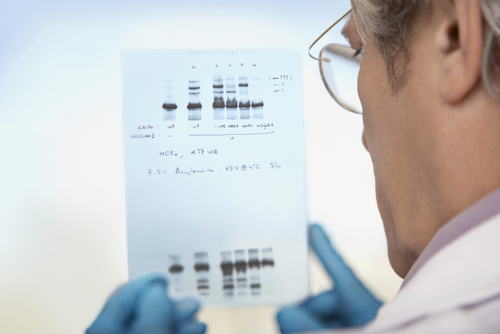Researchers Develop Synthetic Molecule to Bypass FXN Gene Mutation, Report Says

Researchers at the University of Wisconsin-Madison have developed a synthetic molecule that may help overcome the effects of the genetic defect that causes Friedreich’s ataxia.
According to the study, “Synthetic transcription elongation factors license transcription across repressive chromatin,” the Syn-TEF1 molecule can bind to the mutated FXN gene and assist the cellular machinery to correctly read the encoded message. This allows the cell to produce the normal version of frataxin protein instead of the disease-associated mutated version. The study was published in the journal Science.
Friedreich’s ataxia is a genetic disease that is characterized by the addition of hundreds of identical, short sequences of DNA with the message “GAA” in the FXN gene. In the presence of these repeats, the genetic code fails to deliver the right message, inducing the production and accumulation of abnormal frataxin protein.
Frataxin is an important element in the process of cellular energy production by mitochondria. When the protein fails to work properly, mitochondria are unable to produce energy and the body’s cells cannot function.
“Without frataxin, tissues that use the most energy get hurt first: the brain, heart and pancreas,” Aseem Ansari, professor of biochemistry and genomics at UW-Madison and senior author of the study, said in a university news release written by David Tenenbaum.
“Most young people with Friedreich’s develop severe heart problems and are wheelchair-bound, but the disease is so rare that few drug companies invest in it,” Ansari said.
The research team developed a new molecule, which they called Syn-TEF1, that was designed to work as a “molecular prosthesis” for the cellular DNA decoding machinery.
One part of the synthetic molecule recognizes the “GAA” repeats on the DNA sequence of FXN gene. A second component of the molecule will then bring together the cellular machinery and will help it pass through the sequence without the interference of the confusing “GAA” repeats section.
They showed that Syn-TEF1 could significantly improve the levels of frataxin protein in cells collected from more than 20 patients with Friedreich’s ataxia. Also, administration of the molecule in mice carrying cells with “GAA” repeats was found to restore the protein’s levels to almost normal values.
These results suggest that “we have figured out how to turn on the part of the gene that is being ignored without doing anything anywhere else,” Ansari said.
This new therapeutic strategy may have the potential to treat not only Friedreich’s ataxia but also other diseases that are caused by similar DNA repeats. Despite the great need for effective and improved therapies, it will still take several years of additional testing before this molecule can be applied to humans, Ansari cautioned.
“Now that we are starting to understand how to defuse these repeats, we see this as a general solution, a molecular engineering principle,” he said. “We would sequence the genome and figure out the problem, and make a molecule tailored for that individual. It’s a new precision-tailored path to personalized medicine.”






